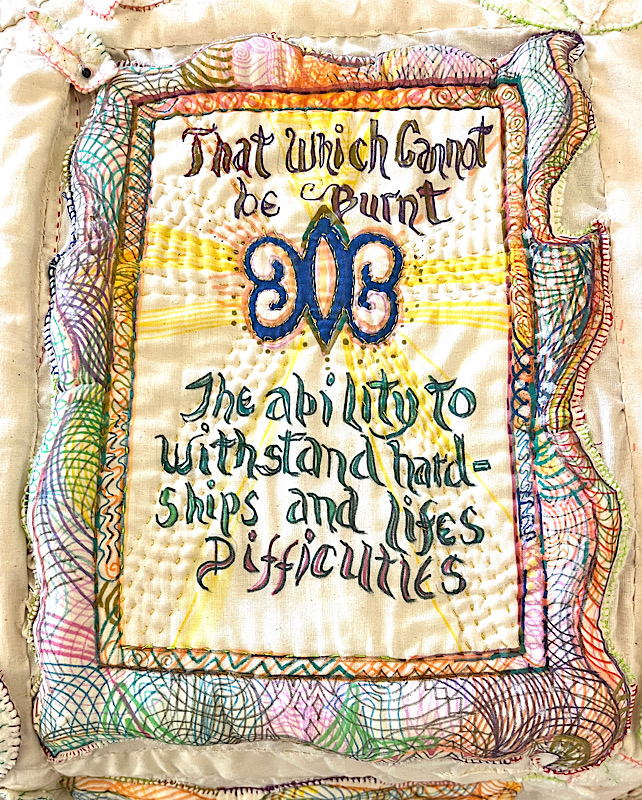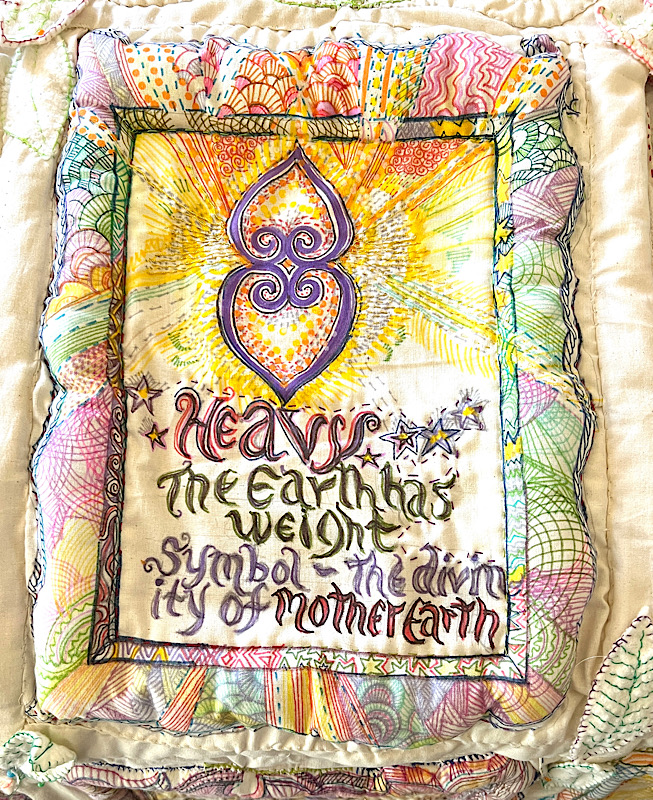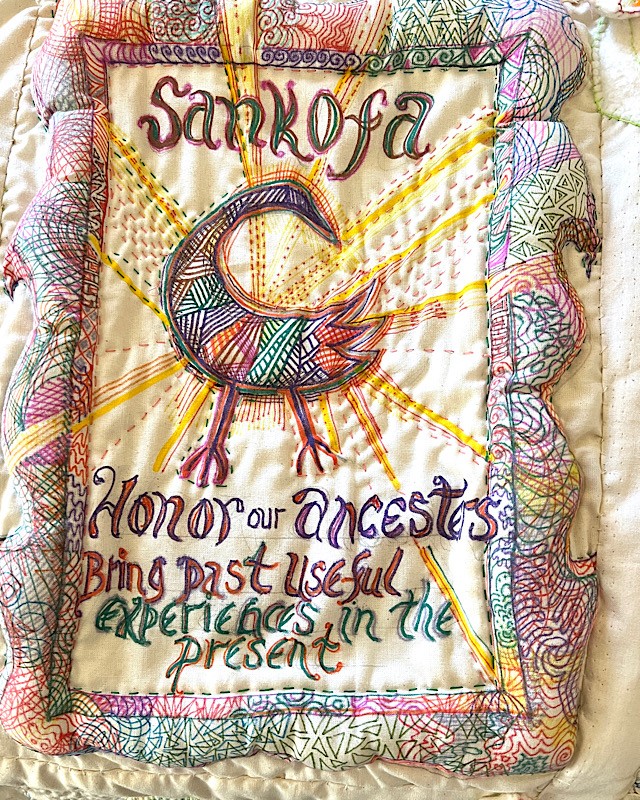Adinkra are visual symbols that represent community values expressed through proverbs dating back over 500 hundreds years. Their origin is attributed to the Gyaman people of Ghana where they appeared on clothing worn by royal family members during ceremonies.
The Gyaman (also spelled Jamang, Gyaaman) was a medieval Akan people state, located in what is now the Bono region of Ghana and Ivory Coast. According to oral tradition, the Gyaman was founded by the Bono people, a branch of the Akan, in the late 17th century. Akan is currently the largest ethnic group in Ghana, making up 47.3% of the population of Ghana.
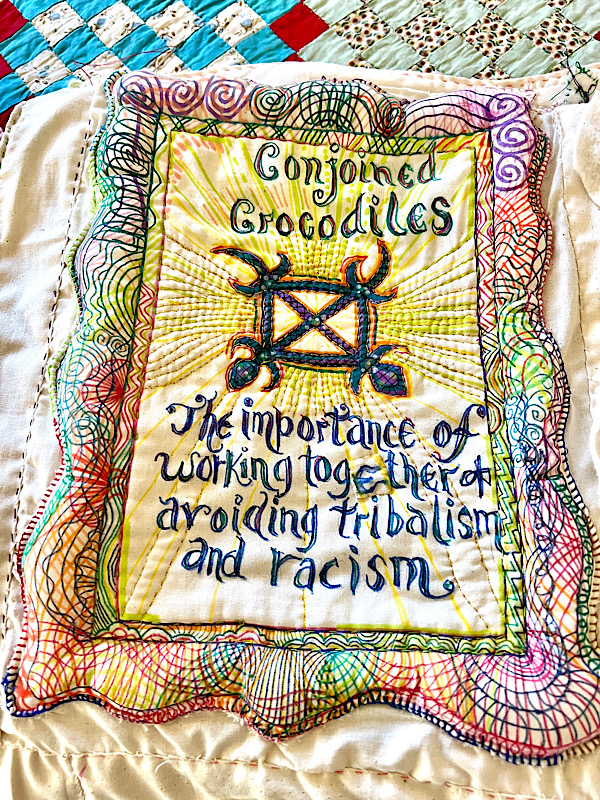
There are over 100 documented symbols which are used to this day in Ghana, Africa to teach virtues and values to the children. The enslaved people from West Africa probably would have had knowledge of this wisdom when they were brought to this continent.
As part of the Polk Home exhibition, Breaking the Chains, Bernice has created a bed quilt, such as may have been used by a family. It is adorned with various Adinkra symbols, along with a short explanation of their meaning.
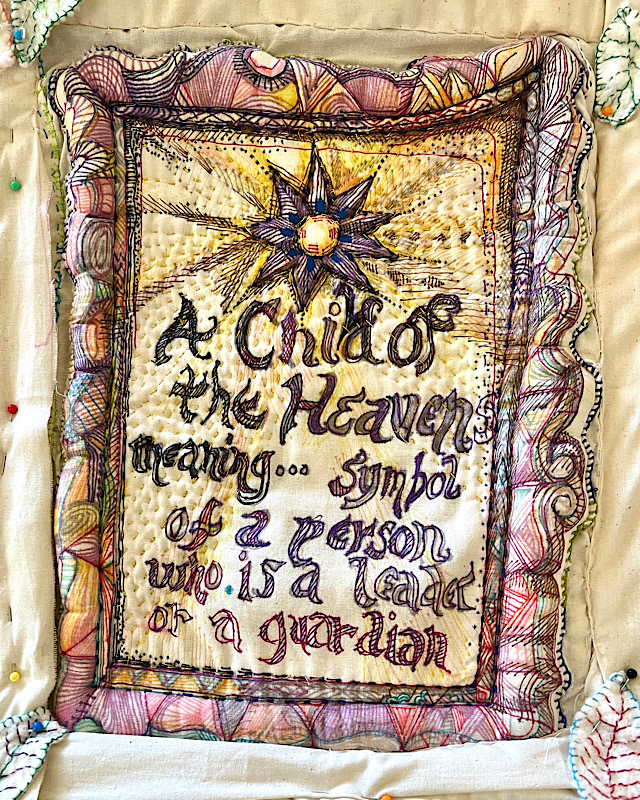
By including the Adinkra symbols in this exhibit, we gift this much forgotten knowledge back into the cultural zeitgeist.

